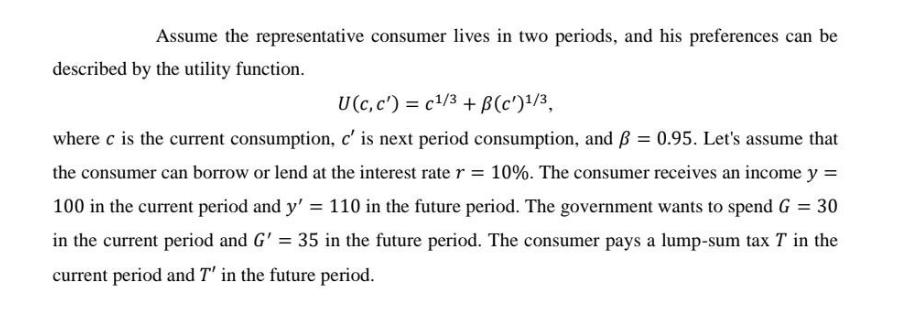Answered step by step
Verified Expert Solution
Question
1 Approved Answer
Assume the representative consumer lives in two periods, and his preferences can be described by the utility function. U (c, c) = c/3 +B(c')/3,


Assume the representative consumer lives in two periods, and his preferences can be described by the utility function. U (c, c) = c/3 +B(c')/3, where c is the current consumption, c' is next period consumption, and = 0.95. Let's assume that the consumer can borrow or lend at the interest rate r = 10%. The consumer receives an income y = 100 in the current period and y'= 110 in the future period. The government wants to spend G = 30 in the current period and G' = 35 in the future period. The consumer pays a lump-sum tax T in the current period and T' in the future period. Suppose that there is no government. a) Write down the consumer's current and future budget constraints. b) Write down the consumer's lifetime budget constraint. c) Suppose that government lump-sum taxes are zero. Then, illustrate the consumer's lifetime budget constraint. d) Write down the consumer's optimization problem, and find the optimal consumption bundle.
Step by Step Solution
★★★★★
3.46 Rating (159 Votes )
There are 3 Steps involved in it
Step: 1
To analyze the consumers problem we need to maximize their utility subject to their budget constrain...
Get Instant Access to Expert-Tailored Solutions
See step-by-step solutions with expert insights and AI powered tools for academic success
Step: 2

Step: 3

Ace Your Homework with AI
Get the answers you need in no time with our AI-driven, step-by-step assistance
Get Started


